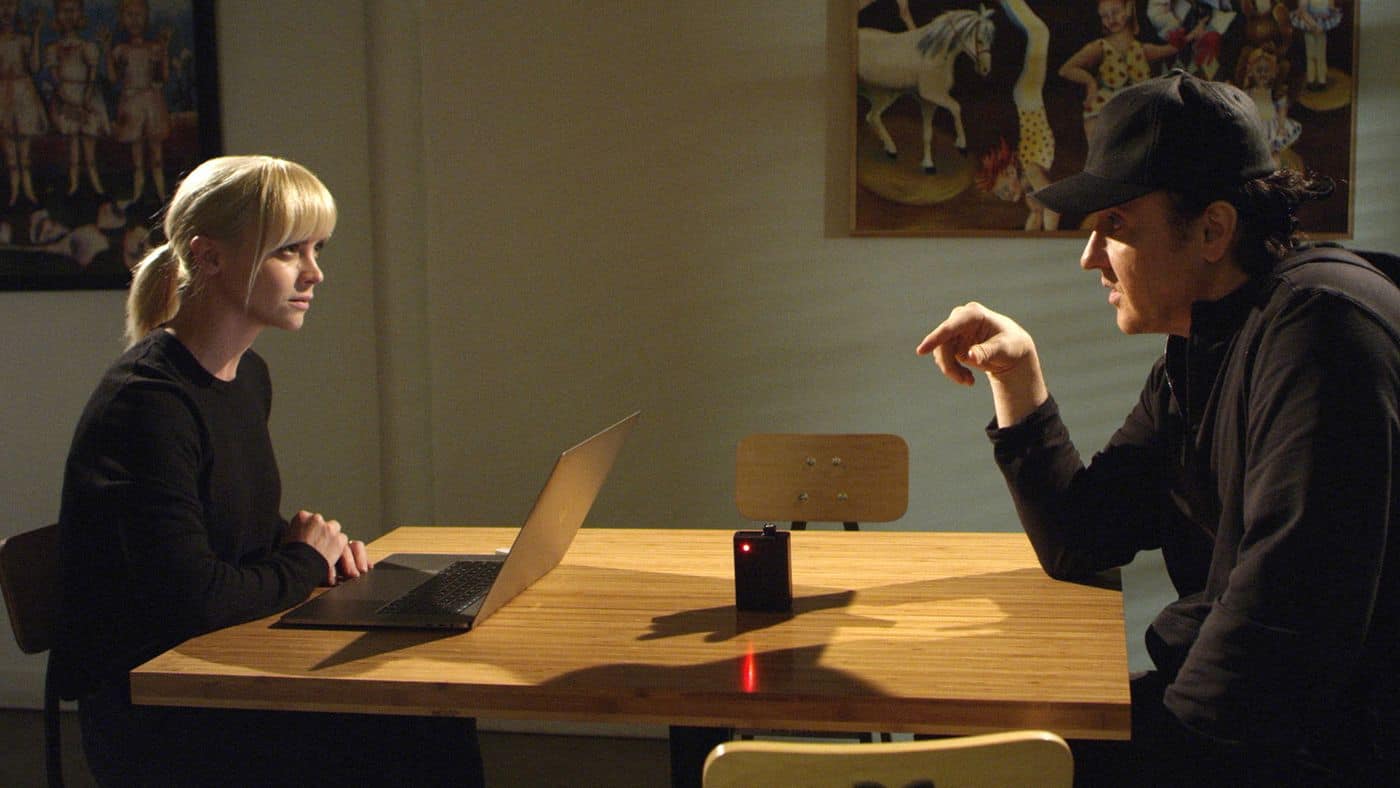
In a luxury condo development, intrusive flash imagery invades an already tormented mind.
Stories of mass manipulation and shadowy cabals will always have a place on our screens and in our collective hindbrain. Whether we are talking about Soviet infiltration, satanic panic, or the inner workings of the “deep state,” the idea that immense forces beyond our control are working to harm us is never far from our imagination. Though they are grim and often devoid of hope, conspiracy theories offer us a definitive comfort: they assure us that the bad feeling we have does, in fact, exist outside of our own heads.
This is the draw of any good conspiracy theory, and the makers of Distorted understand that. It’s also what ultimately encourages Lauren (Christina Ricci) to begin to suspect that the managers of her new building are using inaudible sounds and subliminal messaging to control her mind. Lauren is in the midst of trying to overcome a depressive episode (and a mysterious tragedy) when her husband Russell (Brendan Fletcher) decides to help calm her nerves by moving them from their luxury apartment to an even nicer luxury condo located in a high security, state of the art facility known as The Pinnacle.
Though this seems like a wise decision, it becomes apparent to Lauren almost immediately after she moves in that something about her new home is amiss. The Stepford Wives affectation of each of her new neighbors is a big tip-off, as are the disturbing sounds and flash imagery that seem to emanate at random from every device in her apartment.
A deep dive into an online chatroom leads Lauren to hacker-journalist Vernon (John Cusack, doing an amusingly high-key Edward Snowden impression). While Lauren has been worried that the events she is experiencing are signs of her own deteriorating mental health, Vernon convinces her that she’s in a whole other kind of movie. He offers her evidence that the residents of The Pinnacle are being subjected to mind control experiments and convinces her that her depression-altered brain chemistry has made their subliminal messaging perceptible to her alone. Lauren happily accepts this conspiracy theory as an alternative explanation for her degrading mental state and teams up with Vernon to uncover the shadowy figures pulling her strings.
The middle section of Distorted, in which Ricci and Cusack work together to unravel the inner workings of The Pinnacle and its nefarious staff, is by far the film’s high point. Unfortunately, the question of whether Lauren’s paranoia is justified is resolved all too quickly and as a result, Cusack and his hacker hoodie are criminally underutilized. As much screen time is allotted to Lauren’s internal struggle as it is to her external one, and the result is a thriller that is neither fully political nor fully psychological, but an underwhelming compromise between the two.
The dystopic themes embedded in Distorted’s premise never receive more than a cursory exploration. Even more disappointingly, the aesthetic potential for a movie about flash imagery and paranoia is never realized. Films such as They Live and the recent release Incredibles 2 have previously used the screens-as-mind-control premise as a means to put inventive and memorable cinematic imagery before viewers. By contrast, the images that flash across Lauren’s flat screen TV in Distorted are almost aggressively generic. They feel like a watered-down version of the creepy tunnel scene from Willy Wonka & the Chocolate Factory and not like the product of a deep depression or advanced mind-control technology.
Many scenes in the film suffer from flat lighting and constricted staging — nobody living at The Pinnacle seems to be able to move and talk at the same time. This stylistic shortcoming is likely due to the fact that director Rob King shot a scripted VR experience simultaneously as a companion piece to the film. (You can view the 360 degree trailer for the VR film, entitled Distorted Reality, here.) Many of the scenes in Distorted were shot twice, once for the film and once in 360 degrees with a GoPro camera in order to create the VR version of the thriller. This method of shooting no doubt limited how visually creative the filmmakers could be.
It would be interesting to see Distorted Reality in its entirety. Lauren’s journey from bewildered depressive to determined activist may play better through VR goggles than it does on a conventional screen. Perhaps her paranoia would feel more profound if audiences could walk the halls of The Pinnacle and experience its hypnotic effects for themselves. It also certainly wouldn’t hurt to be able to view John Cusack and his hilarious hacker hoodie from every possible angle.
Distorted opens June 22nd, 2018 in limited release.

